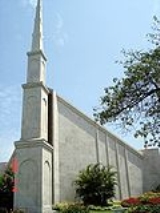
Religion in Peru
Encyclopedia
The Peruvian government is closely allied with the Catholic Church. Article 50 of the Constitution recognizes the Catholic Church's role as "an important element in the historical, cultural, and moral development of the nation." Catholic clergy and laypersons receive state remuneration in addition to the stipends paid to them by the Church. This applies to the country's 52 bishops, as well as to some priests whose ministries are located in towns and villages along the borders. In addition each diocese receives a monthly institutional subsidy from the Government. An agreement signed with the Vatican in 1980 grants the Catholic Church special status in Peru. The Catholic Church receives preferential treatment in education, tax benefits, immigration of religious workers, and other areas, in accordance with the agreement.
Although the Constitution states that there is freedom of religion, the law mandates that all schools, public and private, impart religious education as part of the curriculum throughout the education process (primary and secondary). Catholicism is the only religion taught in public schools. In addition, Catholic religious symbols are found in all government buildings and public places.
2 conferences, according to the church website.
This would represent 2.6% of the current population.
 The statistics for Islam in Peru estimate a total Muslim
The statistics for Islam in Peru estimate a total Muslim
population of of 5,000, largely based in the capital of Lima, Peru; a number which has remained static since 1980.
Although the Constitution states that there is freedom of religion, the law mandates that all schools, public and private, impart religious education as part of the curriculum throughout the education process (primary and secondary). Catholicism is the only religion taught in public schools. In addition, Catholic religious symbols are found in all government buildings and public places.
2 conferences, according to the church website.
This would represent 2.6% of the current population.
Islam

Muslim
A Muslim, also spelled Moslem, is an adherent of Islam, a monotheistic, Abrahamic religion based on the Quran, which Muslims consider the verbatim word of God as revealed to prophet Muhammad. "Muslim" is the Arabic term for "submitter" .Muslims believe that God is one and incomparable...
population of of 5,000, largely based in the capital of Lima, Peru; a number which has remained static since 1980.

